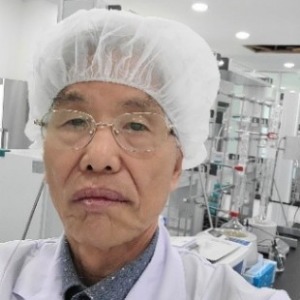Title : Simple and effective methods for identifying in vivo gene response reaction mechanisms
Abstract:
Recently, biomedicine has made a great contribution to the development of the anti-aging field. Biomedical research has revealed that aging mechanisms are deeply linked to the development of cancer and chronic diseases. However, there are still many difficulties in accurately identifying the process by which the human body ages and the causes of chronic diseases. The field of chemical reaction mechanism tools has made a significant contribution to the field of biomedicine. Among the areas of biomedicine, reaction mechanism tools are making a groundbreaking contribution to treating the anti-aging field, which aims to realize the dream of gene scissor therapy and life extension. Understanding of reaction mechanisms is an important role in identifying and resolving the results of measurements of analysis of cellular heterogeneity in gene expression. Although the latest physiological measurements are used to identify the diseases and to provide a lot of measurement data, there are many difficulties in accurately determining the cause of the disease, diagnosing and finally treating it. Recently, new technologies have been used as variant of flow cytometry based on fluorescence, light scattering and separation techniques to sort cells and to confirm the results of measurements. These tools are based on molecular spectroscopy. Laser capture microdissection based on mass spectrometry is helpful to identification that is coupled to a microscope and focused on a tissue. Molecular mass spectrometry is widely applied in RNA sequencing tool based on headspace solid-phase microextraction/gas chromatography-mass spectrometry. Inflammation is one of the major causes of cellular senescence. Inflammatory aging is characterized by increased levels in the proinflammatory factors in the cells. Senescent cells secrete molecules that promote chronic inflammation and organ deterioration, contributing to chronic diseases and aging. The cell changes lead to the aging of the cells. Utilizing the separation techniques based on mass spectrometry in the field of biomedicine can help in understanding and applying treatments for a multitude of different disease or diverse types of cancer and even expand upon efficient and reliable diagnosis in clinical settings. However, despite the use of these technologies, interpretation of the measured results is very difficult. Chemical reaction mechanisms, especially nucleophilic substitution reaction mechanism tools are applied to accurately interpret these measurement results to determine the cause of chronic diseases and develop treatments. Aniline and its derivatives serve as important molecules in biomedicine. Understanding the nucleophilic substitution reaction mechanism of basic molecule as aniline helps to accurately understand the base reactions of DNA in our body cells. How the length of telomeres at the ends of DNA in our body’s cells increases or decreases can be understood by applying the reaction mechanism of aniline and its derivatives. Using the nucleophilic substitution reaction mechanism tools of basic molecule likely aniline and their derivatives in the field of biomedicine are available to understand and to apply also treatments for multitude of different diseases like Alzheimer’s disease and divers types of cancer, and to expand on efficient and reliable diagnosis in clinical treatments.



